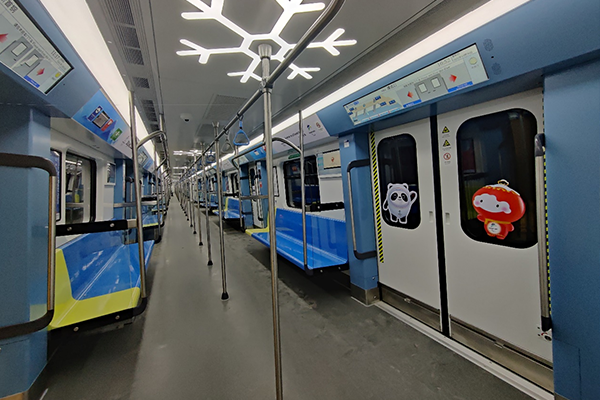Beijing Subway Winter Olympics Branch Line, Every Car Has a “Smart Brain”
The train is equipped with “wisdom eyes” to recognize obstacles in seconds, “virtual marshalling” technology to shorten the waiting time of passengers, and snowflake elements in the carriage to highlight the atmosphere of the Winter Olympics… Since the trial operation of the western section of Beijing Metro Line 11 (Winter Olympics branch line) circle. Behind this train, which has undertaken the “special” transportation service task of the Beijing Winter Olympics, an urban rail transit signal system has played an important role. Gao Chunhai, the leader of the signal system R&D team and chairman of Traffic Control Technology Co., Ltd., described the technological innovation and talent power behind Beijing Metro Line 11.
On December 8, 2021, Traffic Control Technology obtained the authorization certificate for the trial operation of the new generation of “vehicle-vehicle communication + autonomous perception system”, which provided better solutions for the reconstruction of new lines and existing lines in the urban rail transit industry.

Gao Chunhai introduced that “vehicle-vehicle communication” is upgraded from “vehicle-ground-vehicle” communication, which simplifies the circulation of communication data from train to ground and then to the middle of the train. This means that information such as the train’s position, speed, and movement authorization no longer needs to be forwarded on the ground, and each train can become a “conductor” who can make decisions for itself.
The autonomous perception system uses radar, machine vision, etc. to perform high-reliability perception and identification of the surrounding environment, including trains, people, obstacles, etc. in the track area ahead, to realize clearance detection without driver participation in the event of a fault, and to ensure driving safety to the greatest extent. . Gao Chunhai gave a vivid example: the autonomous perception system can see obstacles within 300 meters ahead with one “eye”.
“In our previous experiments, we simulated the scene where the top of the tunnel in front of the train was broken down. The autonomous perception system immediately detected the anomaly, prompted an early warning and controlled the vehicle to brake.”
What can these high-tech intelligent systems bring to the industry and passengers? “It can further improve the level of operational safety, improve transportation efficiency, improve the quality of passenger service, and reduce operating costs.” Gao Chunhai said.
As the “safety officer” of the train, the autonomous perception system can tirelessly “observe” the surrounding environment in an all-round way under the condition of unmanned driving, so that the safety risks caused by the intrusion of foreign objects in the track area, the intrusion of operating vehicles, and the degradation of the signal system will be eliminated. Greatly reduced.

On the basis of train-to-vehicle communication, trains will also realize “virtual marshalling” in the future, that is, the front and rear trains will not be physically connected, but the trains will be linked together virtually, making operations more flexible and effectively optimizing the travel experience of passengers.
“Trains can be separated and combined online according to demand. During peak periods of subway operation, trains form virtual marshalling to provide high capacity. When there are few passengers during peak subway operations, the trains are automatically demarcated, and small groups run at low intervals, reducing the waiting time of passengers.” Gao Chunhai explained that such a design can also effectively reduce operating costs and reduce energy consumption.
It is reported that Beijing Line 11, as the branch line of the Beijing Winter Olympics, is also the first demonstration project of the National Smart Metro under the responsibility of Beijing Infrastructure Investment Co., Ltd.
